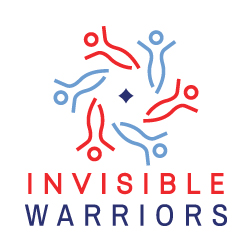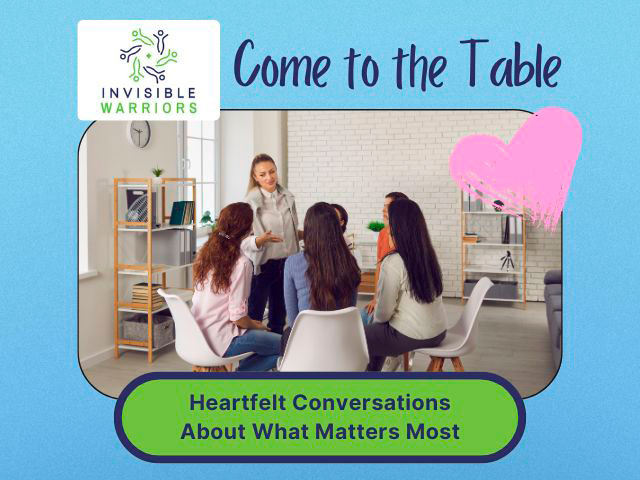
Validating an Invisible Illnesses
Validating an Invisible Illness
Kathy had been feeling really rundown and achy for months. She went to see her primary care doctor multiple times, but each time the doctor dismissed her concerns saying things like, “You just need more rest” or, “It’s probably just stress.” Thus her journey for validating an invisible illness began.
She knew something wasn’t right, though. The fatigue and pain she felt was not normal. But the doctor made her start questioning herself and wondering if maybe she was just being dramatic.
Trying her best to push through and live a normal life, it became harder and harder. Simple tasks like going to work, cleaning the house, or running errands left her utterly exhausted.
Finally, after nearly a year of suffering, Kathy found a new doctor. She explained all her symptoms – the fatigue, body aches, brain fog, and more. This doctor actually listened. They ran some tests and eventually diagnosed her with fibromyalgia, a chronic condition that causes widespread musculoskeletal pain and fatigue.
Finally relieved to have an answer, she was also frustrated that she had been dismissed and gaslit by previous doctors who made her feel like her very real symptoms were just in her head. With proper treatment and management, her symptoms became more under control, but it was a long journey to get the care she deserved.
Asserting Your Rights as a Patient
Self-advocating at the doctor’s office when they are not listening or taking your illness seriously can be extremely frustrating, but it’s important to persist if you have any chance of validating your invisible illness. Here are some steps to follow:
Come Prepared
• Keep a detailed symptom journal tracking when issues occur, their severity, triggers, etc. Having concrete data helps validate your experiences.
• Bring research on your suspected condition from reputable sources to educate the doctor.
• Make a list of your key concerns and questions so you don’t get flustered and forget anything important.
Be Respectfully Assertive
• Don’t minimize or downplay your symptoms. Describe their full impact on your daily life.
• If the doctor dismisses you, respectfully reiterate the facts and that you need them to take this seriously.
• Ask them to specifically explain why they think your symptoms are due to another cause.
Bring Support
• Having a spouse, friend or family member attend appointments can provide a second voice corroborating your symptoms.
• They can also take notes, ask questions you may miss, and advocate on your behalf.
Know Your Rights
• You have the right to view test results and records to ensure critical information isn’t missed.
• You can request a second opinion, either from another doctor in the same practice or elsewhere.
• If you feel you’re still being dismissed, you can change practices entirely. Your health is priority.
Self-advocacy takes persistence, but don’t give up until you find a doctor who truly listens. Getting a proper diagnosis and treatment plan can make a life-changing difference for your well-being.

Ways to Better Explain What’s Going on in Your Body
Sometimes we aren’t clear enough about what we’re feeling. Here are some examples of how to clearly and effectively describe your illness to a doctor:
Symptom Details
• “The fatigue I experience is completely debilitating. Even after nine hours of sleep, I wake up feeling just as drained as when I went to bed.”
• “The joint pain and stiffness is worst in my knees, hips, and hands. It’s severe enough that some days I can barely get out of bed or grip objects.”
• “I get dizzy spells and headaches almost daily, usually worsened by standing for too long.”
• “I’ve noticed this red, butterfly-shaped rash comes and goes on my cheeks when I’ve had a symptom flare.”
Impact on Life
• “This illness has caused me to miss 12 work days in the last two months because of symptom severity.”
• “Simple household chores like vacuuming or doing laundry leave me utterly exhausted for the rest of the day.”
• “I’ve had to stop exercising and attending my weekly tennis matches, which was a big stress-relief activity for me.”
• “My symptoms make it difficult to concentrate, so I’m struggling in my college courses right now.”
Tracking Patterns
• “I’ve noticed I tend to have flare-ups of muscle weakness and fever about a week after getting a virus like the cold or flu.”
• “My symptoms seem to be cyclical – they’ll be manageable for a couple weeks and then I’ll have an intense flare that lasts 7-10 days.”
• “Certain foods like gluten, dairy or alcohol appear to trigger more joint pain and brain fog within 24 hours after eating them.”
Using descriptive details, keeping a log, and quantifying the impact can all help the doctor better understand your unique condition. Don’t hold back – honest communication is crucial for validating your invisible illness.

Validating an Invisible Illness
Want to know more about Invisible Warriors? Sign up for our newsletter to receive regular updates. Contact us HERE. Or click the button below to schedule a meeting with Founder Nancy Becher!









